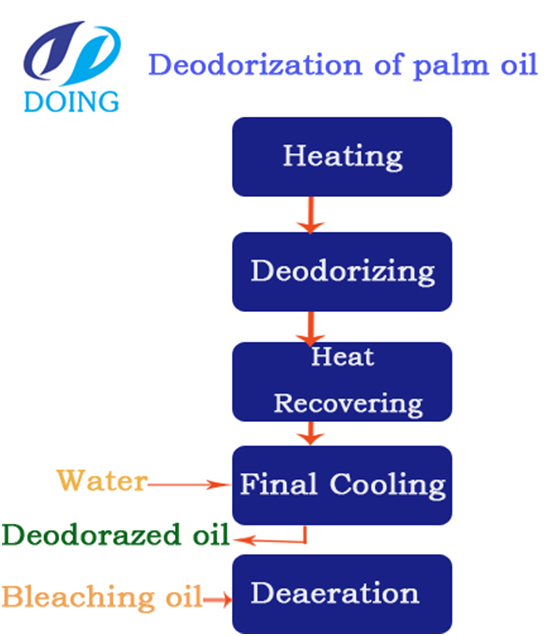Deodorization technology of palm oil
Company news / Chat on line / Give me a price / Date: June 23, 2016
Deodorization is actually a stripping process in which a given amount of a stripping agent (usually steam) is passed for a given period of time through hot palm oil at a low pressure. Hence, it is mainly a physical process in which various volatile components are removed. However, since it is usually carried out at high temperature (> 200°C), some chemical, thermal effects may take place as well.

Palm oil deodorization
Palm oil contains various components, each with its specific volatility. In physical refining, it is mainly free fatty acids (FFA) that need to be stripped. Apart from FFA, other volatile components, either valuable (tocopherols, sterols, etc) or unwanted (off-flavors, pesticide residues, light polycyclic aromatic hydrocarbons, dioxins, etc), are also removed during deodorization.

Palm oil deodorization
Palm oil contains various components, each with its specific volatility. In physical refining, it is mainly free fatty acids (FFA) that need to be stripped. Apart from FFA, other volatile components, either valuable (tocopherols, sterols, etc) or unwanted (off-flavors, pesticide residues, light polycyclic aromatic hydrocarbons, dioxins, etc), are also removed during deodorization.
| Deodorized palm oil | |
| Quality parameter | Physical refining palm oil |
| FFA (%) | 85-90 |
| Tocopherols (%) | 0.15-0.30 |
| Sterols (%) | 0.2-0.4 |
| Squalene (%) | 0.5-1.0 |
| Neutral oil (%) | 6-9 |
| Distillate flow (%) | 0.3-1.0 |



